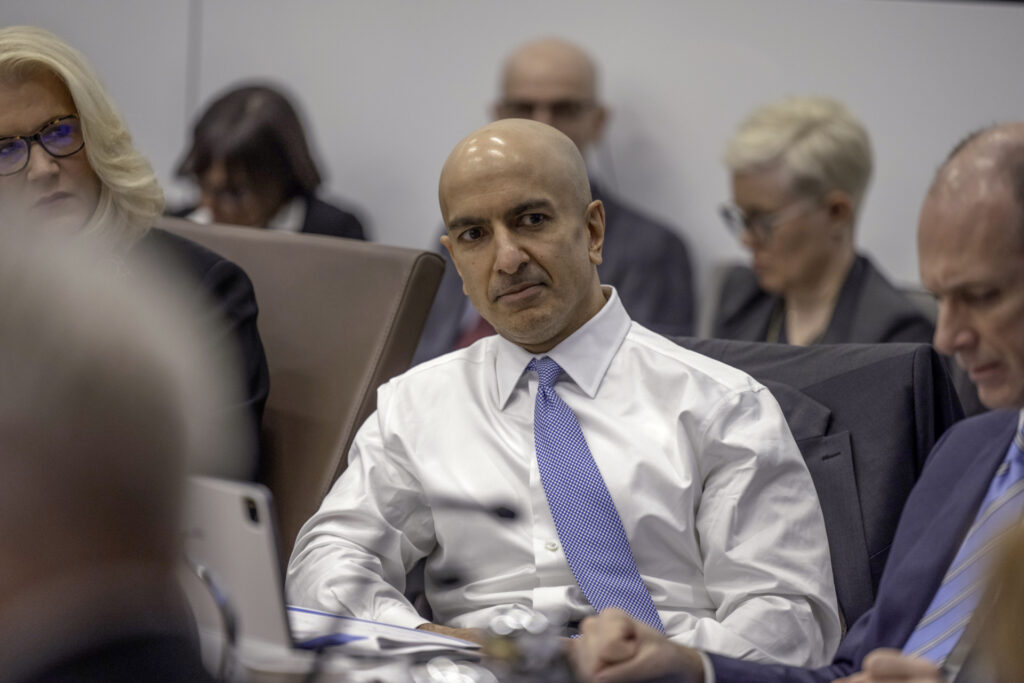It is becoming clearer with each passing day that there will be no interest rate cuts in the immediate future—and maybe not even in the distant future.
Federal Reserve Chairman Jerome Powell and his team are standing firm in their battle against inflation, a monster unleashed by the Biden administration’s disastrous economic policies and Biden’s use of the pandemic recovery as an opportunity to score political points.

(Photo: Adam Schultz/White House via Flickr; Pexels; BNN)
Resilient Markets and Consumer Spending
Inflation is still rearing its ugly head, now fueled by soaring rental costs, sky-high auto insurance premiums, and ever-increasing healthcare expenses. These are the direct results of an economy thrown into disarray. The Fed, demonstrating a hard-won prudence that was sorely lacking when even its more hawkish officials predicted a quick demise of inflation back in 2021, is prepared to keep borrowing costs high until these inflationary pressures are under control.
Many indicators might show a resilient economy, with growth and employment figures holding steady. The latest purchasing managers surveys and consumer confidence figures suggest the pace of economic activity picked up in May. The Cleveland Fed’s GDPNow tells us that the data so far suggest the economy is growing at a 3.5 percent pace in the second quarter.
Home prices have been defying gravity despite the highest mortgage rates in decades. This is partly due to the lack of supply of homes for sale due to homeowners hanging on to their current houses to preserve the low mortgage rates they locked in before the Fed hiked interest rates. But this would be less of a factor if demand for homes were not so strong.
And even though there are stories everywhere about consumers being squeezed by high prices, Americans are still spending at high levels. Bank of America on Wednesday reported that a record level of people flew out of U.S. airports in the week leading up to Memorial Day, a nearly seven percent jump over the comparable period last year and in 2019. Importantly, this is not an inflation story, where people spend more because prices are high. This is traffic volume, and the timing suggests a lot of it is leisure travel.
Need more? Shares of Abercrombie & Fitch are soaring after the retailer reported another earnings beat and raised its sales growth outlook. Chewy shares are up better than 21 percent based on its first quarter earnings, in large part because Americans are signing up for automatic delivery and payment of pet supplies. That’s not something you’d expect a cautious consumer to do. Shares of Dick’s Sporting Goods jumped to a record high as it beat earnings and said it’s customers are spending more per visit.
“We saw growth across all of our income demographics, and we didn’t see a trade down from best, better, better to goods, so pretty consistent across all the income demographics of cohorts,” chief executive Lauren Hobart said.
Although the broader stock market struggled a bit on Wednesday, stocks have been on a tear this year. The Nasdaq Composite is up nearly 15 percent. The S&P 500 is up 11.3 percent and has already broken through most analyst forecasts for the year. Ten out the 11 sectors of the S&P are up for the year, with real estate the only exception. Health care is the sluggard of the rising parts of the stock market because it is up a mere 4.4 percent.
The Recession Signals Have Gone Haywire
Critics of the Fed’s current stance insist that prolonged high interest rates could push us into a recession, a scenario that they point out could spell disaster for working Americans. Some of the traditional indicators of a looming recession are still flashing red: the yield curve remains inverted, and the expectations gauge of the Conference Board’s consumer confidence measure is depressed. The index of leading indicators, while no longer in recession forecasting territory, points to a sharp slowdown.
President Joe Biden delivers remarks on October 13, 2023, in Philadelphia. (Official White House Photo by Adam Schultz via Flickr)
But these have all been signaling a recession or a slump for over a year. They are well past their sell-by date. If these indicators are still useful at all, they are useful as a signal that the economy is behaving very differently than it did in the decade before the pandemic.
The labor market has softened a bit, mostly in the form of declining quits and job vacancies. But the quits number is probably being depressed by the mortgage rate lock-in effect preventing homeowners from relocating. Job vacancies have fallen but are still high by historical standards. In any case, this is more of a sign that the labor market is coming into better balance rather than impending doom.
Credit card delinquencies have risen to their highest levels in 14 years. But most of that period can be described as the most debtor-friendly period perhaps in human history, when the Fed was locked in at zero, buying bonds like crazy, and households were repairing balance sheets following the financial crisis. And by longer-term historical measures, delinquencies are not high. They are low.
Major retailers like Target, Walgreens, and McDonald’s are cutting prices to attract consumers who are tightening their belts. These trends are seen by some as signs of financial strain, but they look more like businesses competing for market share.
Will ‘End of Our Democracy’ Hysteria Move the Fed?
Politically, the stakes could not be higher. The average American is deeply unhappy with the economy and Biden’s leadership, feeling the pinch of rising costs for essentials like rent, groceries, and gasoline. Voters are rightly angry, and many have correctly laid the blame squarely on President Joe Biden. The inflationary squeeze is a direct consequence of the current administration’s policies, and the people know it.
Biden had pinned his re-election hopes on the fading of inflation, which he hoped would be cemented by a series of Fed cuts prior to election day. While a September surprise is still possible, it looks increasingly unlikely. In fact, Fed officials have wisely been preparing the market for the idea that rate hikes are not entirely off the table—something Breitbart Business Digest has been urging the Fed to do for months.
“I’ve been asked many times when we take potential interest rate increases off the table,” Minneapolis Fed President Neel Kashkari said this week. “I don’t think anybody has formally taken them off the table.”

The reckless federal spending spree that started Biden’s American Rescue Plan and the resultant ballooning budget deficits have left the economy in tatters, and it’s the average American who is paying the price. The Fed’s cautious approach is commendable, but will they have the gumption to resist the inevitable political pressure to cut rates prematurely? The long-term health of the economy depends on their steadfastness. Powell and his team must stand firm against the rising tide of demands for immediate relief and focus on the broader, more durable goal of economic stability and resilience. The hysterical cries that a Biden loss in November threaten to unwind democracy itself are aimed, in part, at frightening the Fed into a premature cut.
In the end, it’s a matter of credibility and resolve. The Fed must maintain its course, even as the political winds blow fiercely. Inflation is a dragon that requires a firm hand and a steady sword. The real question is whether the Fed will have the fortitude to stay the course or succumb to the siren calls of political expediency.


